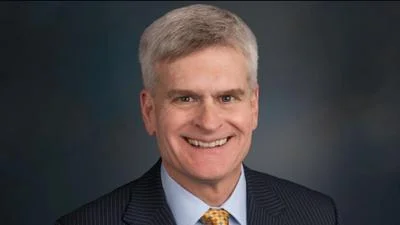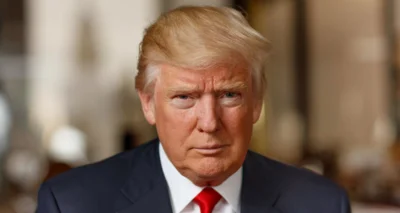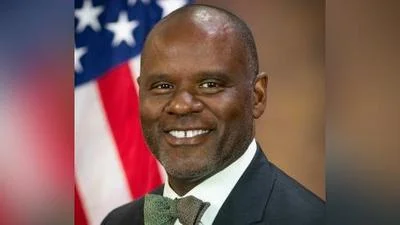WASHINGTON - U.S. Secretary of the Interior David L. Bernhardt today announced the annual economic benefit of national parks to the U.S. and local economies. In 2019, visitor spending in communities near national parks resulted in a $41.7 billion benefit to the nation’s economy and supported 340,500 jobs. Visitor spending increased by $800 million from 2018 to 2019 and the overall effect on the U.S economy grew by $1.6 billion. In the last five years, visitor spending has increased by $4.1 billion and the effect on the U.S. economy grew by $9.7 billion.
“We have been working to safely welcome the public back to their national parks and provide more service again," said Secretary Bernhardt. “These treasured places provide respite and recreation for the American people, in addition to vital economic support to gateway communities across the country. The tremendous value of our national parks is undeniable as is the need to adequately maintain them, which is why President Trump has called on Congress to address the decades of deferred maintenance."
According to the annual National Park Service report released today, 2019 National Park Visitor Spending Effects, more than 327 million visitors spent $21 billion in communities within 60 miles of a park in the National Park System. Of the 340,500 jobs supported by visitor spending, more than 278,000 jobs exist in communities adjacent to parks. The report includes statistics by park and by state on visitor spending and the number of jobs supported by visitor spending.
“Safely increasing access to national parks and other public lands supports individual and collective physical and mental wellness, said National Park Service Deputy Director David Vela, exercising the authority of the Director. “It also benefits park gateway communities where millions of visitors each year find a place to sleep and eat, hire outfitters and guides and make use of other local services that help drive a vibrant tourism and outdoor recreation industry."
Lodging expenses account for the largest share of visitor spending totaling $7.1 billion in 2019. The restaurant sector had the next greatest effects with $4.2 billion in economic output. Motor vehicle fuel expenditures were $2.16 billion with retail spending at $1.93 billion.
There are National Park System sites in all 50 states, the District of Columbia and the U.S. Territories of Puerto Rico, the Virgin Islands, American Samoa and Guam. Visitation varies across the country, from Grand Canyon National Park in Arizona to Grand Portage National Monument in Minnesota.
Last year, Grand Canyon National Park attracted nearly 6 million visitors who spent more than $890 million, supporting 11,806 jobs and generating a $1.1 billion total economic output. Grand Portage National Monument recorded approximately 94,985 recreation visitors who spent an estimated $6,208,000. That spending supported 78 jobs and more than a $6 million total economic output.
An online interactive tool enables users to explore visitor spending, jobs, labor income, value added, and output effects by sector for national, state, and local economies. It also shows annual, trend data.
For additional state-by-state information about national parks and how the National Park Service is working with communities, go to http://www.nps.gov/[statename], for example: http://www.nps.gov/virginia.
National Park Visitor Spending Contributions to the U.S. Economy 2012-19.
Visitation
Visitor Spending
Jobs Supported
Local Jobs
Total Output
2012
282,765,682
$14.7 billion
242,712
201,040
$26.8 billion
2013
273,630,895
$14.6 billion
237,599
197,343
$26.5 billion
2014
292,800,082
$15.7 billion
276,960
235,600
$29.7 billion
2015
307,247,252
$16.9 billion
295,339
252,030
$32 billion
2016
330,971,689
$18.4 billion
318,000
271,544
$34.9 billion
2017
330,882,751
$18.2 billion
306,000
255,900
$35.8 billion
2018
318,211,833
$20.2 billion
329,000
268,195
$40.1 billion
2019
327,516,619
$21.0 billion
340,500
278,173
$41.7 billion
www.nps.gov
About the National Park Service. More than 20,000 National Park Service employees care for America's 419 national parks and work with communities across the nation to help preserve local history and create close-to-home recreational opportunities. Learn more at www.nps.gov, and on Facebook, Instagram, Twitter, and YouTube.
Alternative Text for "National Parks Benefit You" Infographic
Infographic titled “National Parks Benefit You". The infographic is decorated with illustrations related to national parks, such as a sun over mountains, trees, a summited rock climber, the Gateway Arch, and a map of the United States.
Text reads “National parks are a vital part of our nation’s economy and help drive a vibrant tourism and outdoor recreation industry.
Visitors spent $21 billion in communities within 60 miles of a park. 340 thousand jobs were supported by visitor spending.
Over 327 million visitors traveled to National Park Service sites in 2019.
A contribution of $41.7 billion to the nation’s economy. Every $1 invested by American taxpayers in the National Park Service returns approximately $10 to the U.S. economy.
Golden Gate National Recreation Area attracted more than 15 million people who spent more than $1 billion which supported 10,606 jobs and had a $1.4 billion total economic output. [Please note the updated estimate is $1.1 billion total economic income.]
Every $1 invested by American taxpayers in the National Park Service returns approximately $10 to the U.S. economy.
Charles Young Buffalo Soldiers National Monument welcomed over 14,000 visitors who spent $839,000 within 60 miles of the park. That spending supported 13 jobs and had a $1.1 million total economic output. Images include silhouette of a bison, US map, and hiker."
For questions about information on this infographic and the National Park Service’s 2019 National Park Visitor Spending Effects Report contact the National Park Service Office of Communications by emailing newsmedia@nps.gov.
Source: U.S. Department of the Interior, National Park Service





